Instruction
Clark: Golf is a reaction game
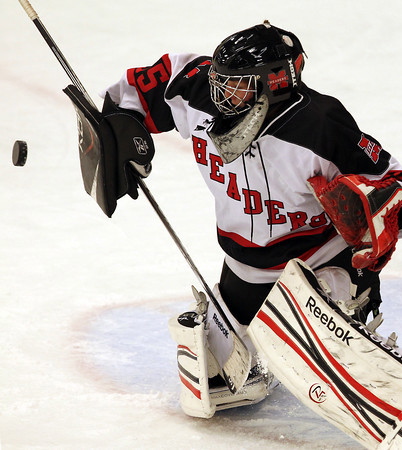
To most of us golf seems like a deliberate, planned exercise where we act on the ball or we initiate the motion upon it. But unlike baseball, where we react to the ball hit our way or the pitch thrown at us; or tennis where we react to the serve of the opponent, in golf it seems there is no need to REACT simply because the ball is just sitting there. However, nothing could be further from the truth.
If you go to a driving range and watch new players trying to hit the ball, it is a most instructive exercise. I enjoy it immensely because I learn so much from it. Typically the progression is something like this. Swing, miss, swing, hit ground, swing, shank, etc. But sooner or later, by hook or crook, new players swing and put the club on the back of the ball, and voila! The ball goes in the air and somewhat in the direction of the target! At that moment, something magical happens in their life: THEY BECOME A GOLFER!
They were not a golfer when they missed the ball or laid sod over it, but they joined the fold when the golf ball did some version of what it was supposed to do. Now, and here’s what is important for us to understand, the series of motions they executed to produce that ball flight tells them that they must have done SOMETHING right to make the golf ball behave that way. And they spend a good part of their golfing life trying to repeat that motion. The positive reinforcement is so powerful, it becomes the very foundation of their future swing and stays with them for quite a long while. They are reacting to the first great shot of their lives! They saw the golf ball behave, marveled at its flight and wondered, sometimes aloud, what they did to produce that magical shot.
The most recurring theme in golfdom is simply this: golfers REACT. They react to one of two things: the shot they just hit or the one they usually hit. Right or wrong they habitually swing AWAY from their predictable ball flight. Slicers come over the top, hookers (no, not them) drop too far inside. It is as inevitable as Monday after Sunday. The instinct to aim or swing left for a slicer is as strong as the batter hitting the dirt after a high hard one was thrown at their head. How do I know? I have watched it for many, many years. It would be insane to do otherwise. So if you think the golf ball is sitting innocently on the ground waiting for you to put your beautiful swing on it, think again. It is resting rather maliciously on the ground directing you to steer it AWAY from its predictable flight pattern. I could threaten a slicer with bodily harm if they swing left and it would be no deterrent whatsoever to over-the-top! You program your next swing at impact of your last. The golf ball only reacts to the club face and path of your swing and YOU only react to the flight it produces!
What can be done for this seemingly chronic malady? Can you do any drills; can you use any training aids? Is there a swing thought to change the pattern? Answer: NO! I know all my friends who design the training aids will tell you I’m crazy, and they are entitled to their view. I have just never seen anything effective until: THE BALL FLIGHT CHANGES! Yep, the correction for a slice is a hook — the correction for a pull is a push and so on. Something has to be done to change the pattern of your shots so that you can REACT in a totally different way. So when I’m working with someone who hits the big banana, I’m working to get them to hook it, NOT HIT IT STRAIGHT! Why? Well, because of everything I’ve just written.
Let’s say I have a student five degrees outside/in on my Trackman reading. I can assure you that they are not going to read three degrees inside/out anytime soon. So let’s use this example. What to do? Try any or all of the following: A much stronger grip, a very early roll over release, take the club face away more shut, swing your arms down early, hit balls with your back to the target, etc. ANYTHING that will produce a right-to-left ball flight, a draw, or better yet a HOOK. When this ball flight becomes the pattern, the norm, then and only then can we start building a new move designed to swing more from the inside. I have used this technique for many years, and it is most effective. Some call this a band aid, to which I would proclaim, “Then buy a whole a box.” It is a training aid intended to change your habits. And it works. The problem is most folks see the golf ball going the other way and try to moderate it TOO SOON. They wean themselves off the drill and new ball flight well before they are ready to affect any real change in their golf swing.
Finally, when should you stop doing the exaggerated drill? When you can actually produce a hook, a true inside/out shallow hook with the golf ball starting right and curving TOO MUCH to the left; then you are ready to step on to the “broad sunlit uplands” as Churchill once so famously described it; That special place of higher learning reserved for the select few who really want to change.
As always, feel free to send a swing video to my Facebook page and I will do my best to give you my feedback.
Click here for more discussion in the “Instruction & Academy” forum.
- LIKE14
- LEGIT2
- WOW3
- LOL0
- IDHT1
- FLOP0
- OB0
- SHANK0
Instruction
Clement: Stop ripping off your swing with this drill!

Not the dreaded headcover under the armpit drill! As if your body is defective and can’t function by itself! Have you seen how incredible the human machine is with all the incredible feats of agility all kinds of athletes are accomplishing? You think your body is so defective (the good Lord is laughing his head off at you) that it needs a headcover tucked under the armpit so you can swing like T-Rex?
- LIKE0
- LEGIT1
- WOW2
- LOL0
- IDHT0
- FLOP0
- OB0
- SHANK2
Instruction
How a towel can fix your golf swing
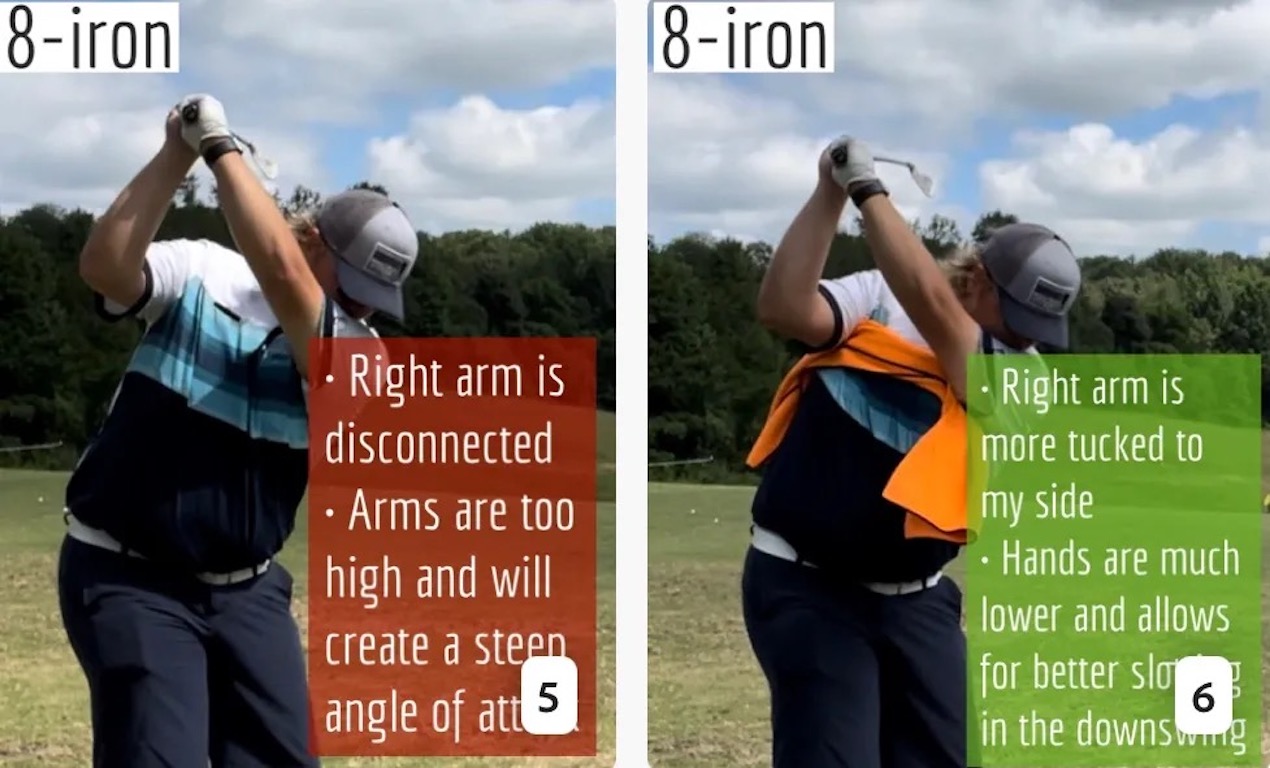
This is a classic drill that has been used for decades. However, the world of marketed training aids has grown so much during that time that this simple practice has been virtually forgotten. Because why teach people how to play golf using everyday items when you can create and sell a product that reinforces the same thing? Nevertheless, I am here to give you helpful advice without running to the nearest Edwin Watts or adding something to your Amazon cart.
For the “scoring clubs,” having a solid connection between the arms and body during the swing, especially through impact, is paramount to creating long-lasting consistency. And keeping that connection throughout the swing helps rotate the shoulders more to generate more power to help you hit it farther. So, how does this drill work, and what will your game benefit from it? Well, let’s get into it.
Setup
You can use this for basic chip shots up to complete swings. I use this with every club in my bag, up to a 9 or 8-iron. It’s natural to create incrementally more separation between the arms and body as you progress up the set. So doing this with a high iron or a wood is not recommended.
While you set up to hit a ball, simply tuck the towel underneath both armpits. The length of the towel will determine how tight it will be across your chest but don’t make it so loose that it gets in the way of your vision. After both sides are tucked, make some focused swings, keeping both arms firmly connected to the body during the backswing and follow through. (Note: It’s normal to lose connection on your lead arm during your finishing pose.) When you’re ready, put a ball in the way of those swings and get to work.
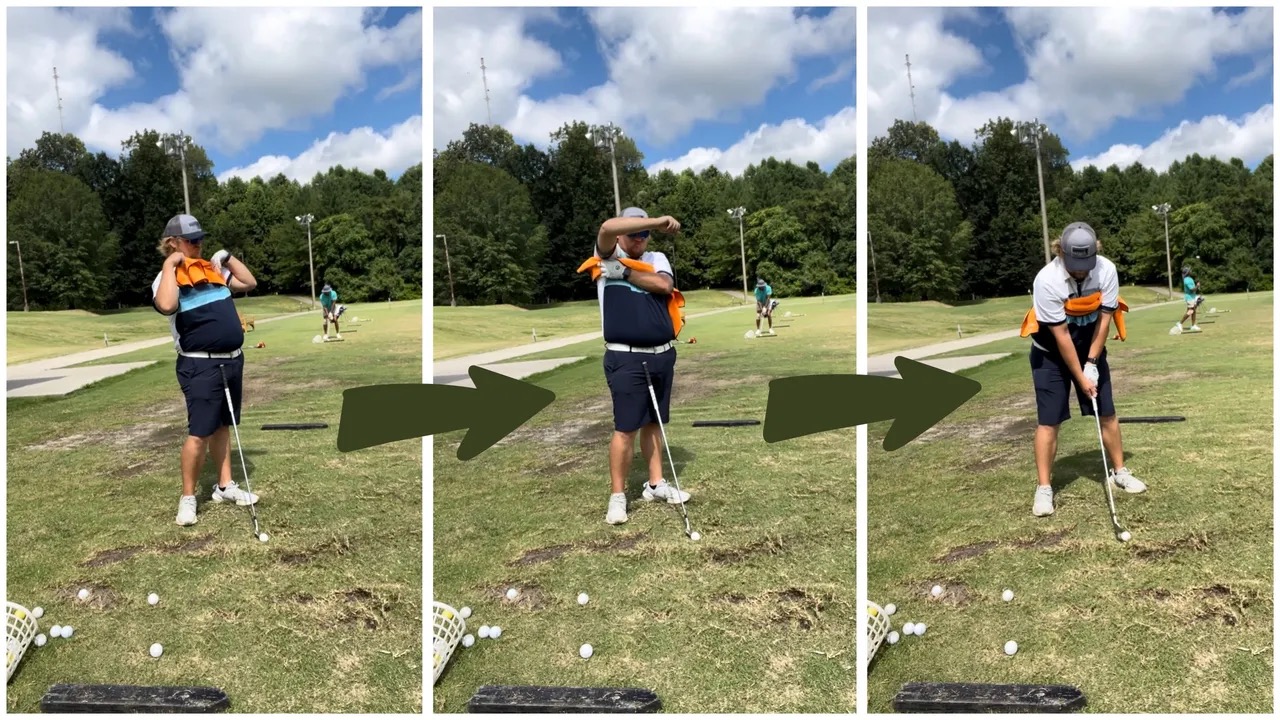
Get a Better Shoulder Turn
Many of us struggle to have proper shoulder rotation in our golf swing, especially during long layoffs. Making a swing that is all arms and no shoulders is a surefire way to have less control with wedges and less distance with full swings. Notice how I can get in a similar-looking position in both 60° wedge photos. However, one is weak and uncontrollable, while the other is strong and connected. One allows me to use my larger muscles to create my swing, and one doesn’t. The follow-through is another critical point where having a good connection, as well as solid shoulder rotation, is a must. This drill is great for those who tend to have a “chicken wing” form in their lead arm, which happens when it becomes separated from the body through impact.
In full swings, getting your shoulders to rotate in your golf swing is a great way to reinforce proper weight distribution. If your swing is all arms, it’s much harder to get your weight to naturally shift to the inside part of your trail foot in the backswing. Sure, you could make the mistake of “sliding” to get weight on your back foot, but that doesn’t fix the issue. You must turn into your trial leg to generate power. Additionally, look at the difference in separation between my hands and my head in the 8-iron examples. The green picture has more separation and has my hands lower. This will help me lessen my angle of attack and make it easier to hit the inside part of the golf ball, rather than the over-the-top move that the other picture produces.
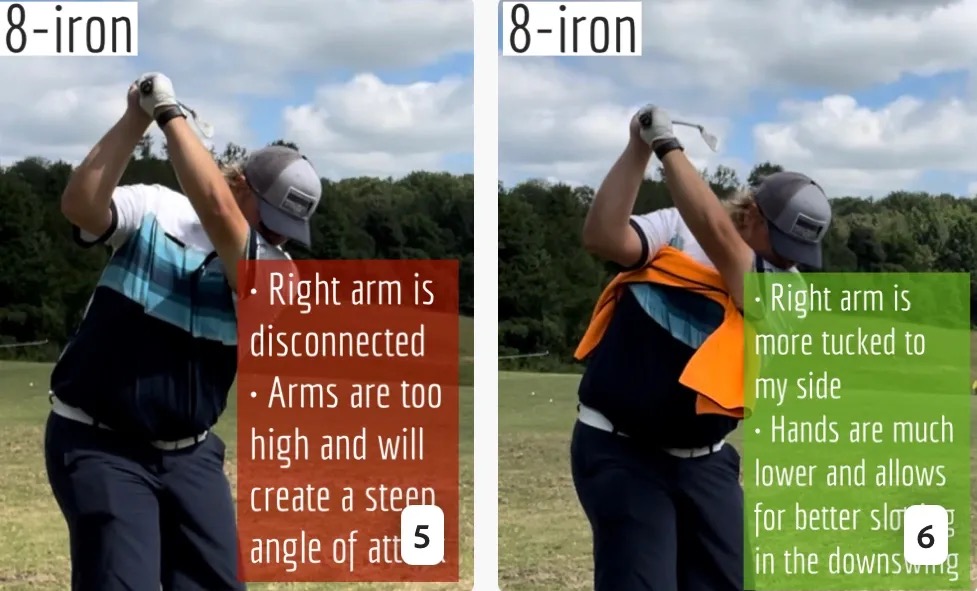
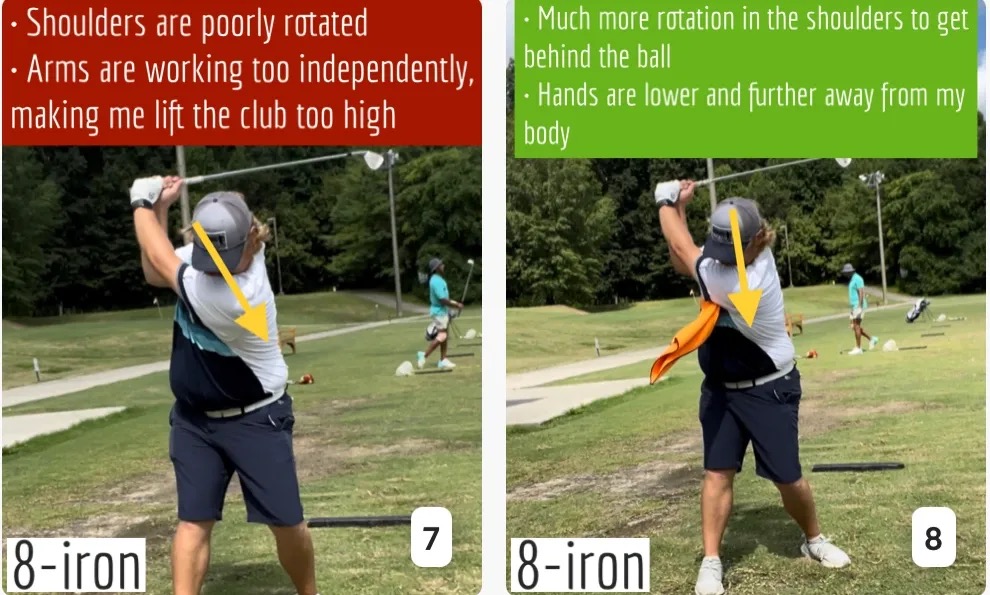
Stay Better Connected in the Backswing
When you don’t keep everything in your upper body working as one, getting to a good spot at the top of your swing is very hard to do. It would take impeccable timing along with great hand-eye coordination to hit quality shots with any sort of regularity if the arms are working separately from the body.
Notice in the red pictures of both my 60-degree wedge and 8-iron how high my hands are and the fact you can clearly see my shoulder through the gap in my arms. That has happened because the right arm, just above my elbow, has become totally disconnected from my body. That separation causes me to lift my hands as well as lose some of the extension in my left arm. This has been corrected in the green pictures by using this drill to reinforce that connection. It will also make you focus on keeping the lead arm close to your body as well. Because the moment either one loses that relationship, the towel falls.
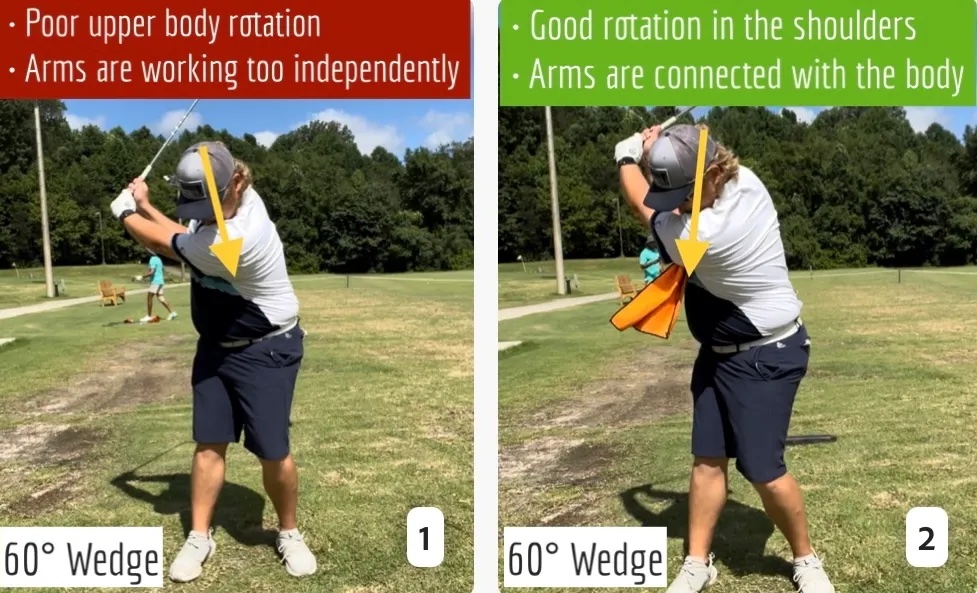
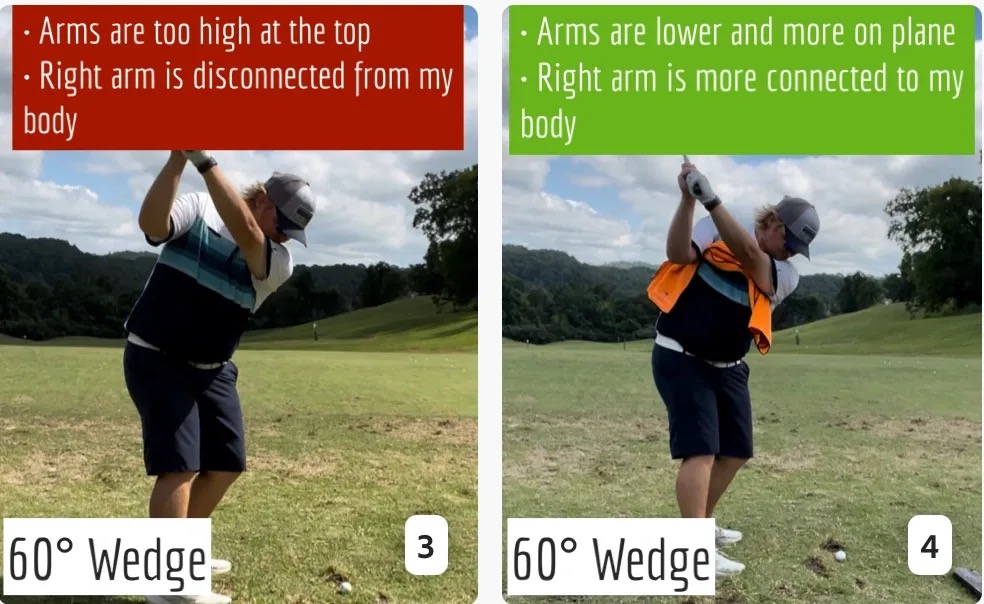
Conclusion
I have been diligent this year in finding a few drills that target some of the issues that plague my golf game; either by simply forgetting fundamental things or by coming to terms with the faults that have bitten me my whole career. I have found that having a few drills to fall back on to reinforce certain feelings helps me find my game a little easier, and the “towel drill” is most definitely one of them.
- LIKE11
- LEGIT1
- WOW2
- LOL0
- IDHT0
- FLOP2
- OB0
- SHANK8
Instruction
Clement: Why your practice swing never sucks
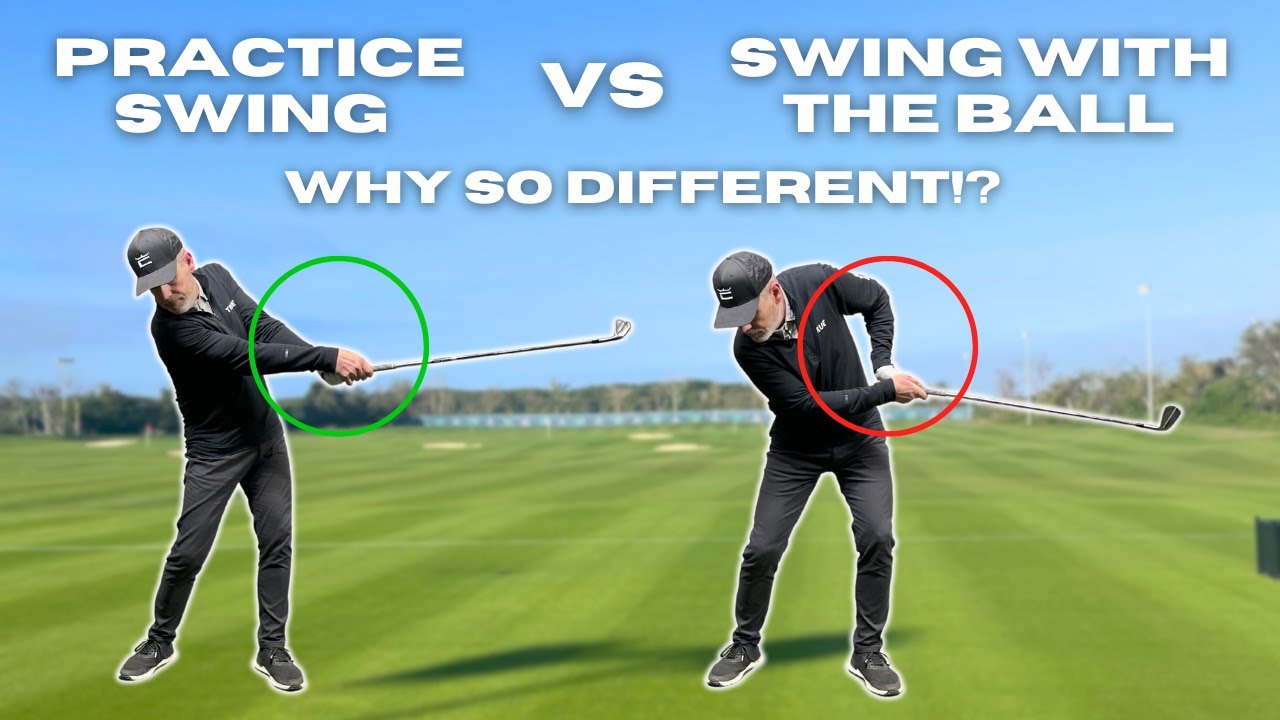
You hear that one all the time; I wish I could put my practice swing on the ball! We explain the huge importance of what to focus on to allow the ball to be perfectly in the way of your practice swing. Enjoy!
- LIKE0
- LEGIT0
- WOW0
- LOL0
- IDHT0
- FLOP0
- OB0
- SHANK2
-
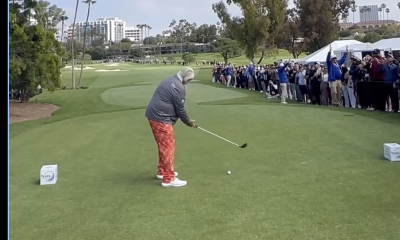
 19th Hole1 day ago
19th Hole1 day agoJohn Daly stuns fans into silence with brutal opening tee shot on PGA Tour Champions
-
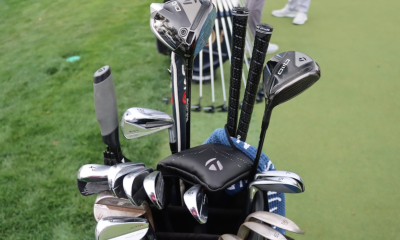
 Whats in the Bag3 weeks ago
Whats in the Bag3 weeks agoScottie Scheffler WITB 2024 (March)
-

 19th Hole3 weeks ago
19th Hole3 weeks agoPaulina Gretzky opens up on receiving death threats following DJ’s move to LIV Golf
-
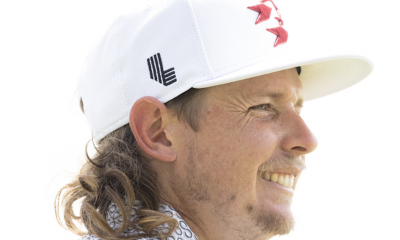
 19th Hole3 weeks ago
19th Hole3 weeks agoVincenzi’s LIV Golf Hong Kong betting preview: Trio of major champs primed for big week
-
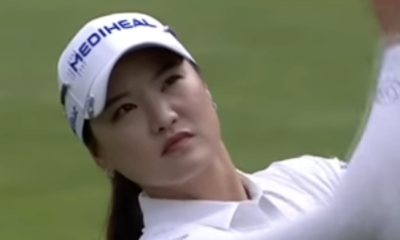
 19th Hole5 days ago
19th Hole5 days ago2-time major champ announces shock retirement from the sport at age of 33
-

 19th Hole6 days ago
19th Hole6 days agoEdoardo Molinari reveals the latest PGA Tour golfer to turn down ‘good offer’ from LIV Golf
-

 19th Hole1 week ago
19th Hole1 week agoScottie Scheffler had an interesting response when asked how he ‘quiets the noise’ following Players victory
-

 19th Hole7 days ago
19th Hole7 days agoJon Rahm dealt fresh blow to hopes of qualifying for 2025 Ryder Cup
















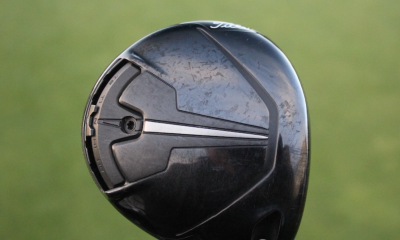

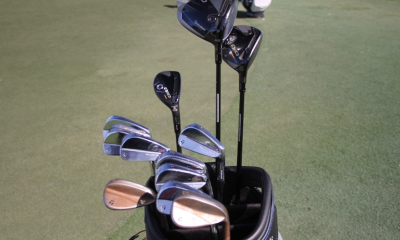

Greg
Jul 27, 2012 at 7:40 am
You have a valid point here. But the difference especially with natural movement is still huge compared to other sports.
Because the golf ball isn’t moving people are more inclined to repeat mistakes much more often because they don’t have the natural varience they have with other sports like soccer or tennis.
Without instruction you won’t stumble upon the right path as easily.
Pingback: GolfWRX.com – Clark: Golf is a reaction game | Golf Driving Hints
joe the pro
Jul 7, 2012 at 10:49 am
this makes more sense than anyhting I’ve read. I can’t get my students to change their move if they keep hitting the same shot! Perfect sense. Where do you teach?
adamyounggolf
Jul 7, 2012 at 2:48 am
I am a golf coach and would agree with this completely. I see in almost every case where the player is reacting to their normal pattern of shots by swinging the opposite direction – any attempt to correct this through forcing body positions is not hitting the real cause and is more of a band aid than the ‘better’ approach you describe. it’s the same problem with lag for example, people lose their lag as they want to see a high flying shot in many cases. Any attempt to force lag is not going to be long lasting